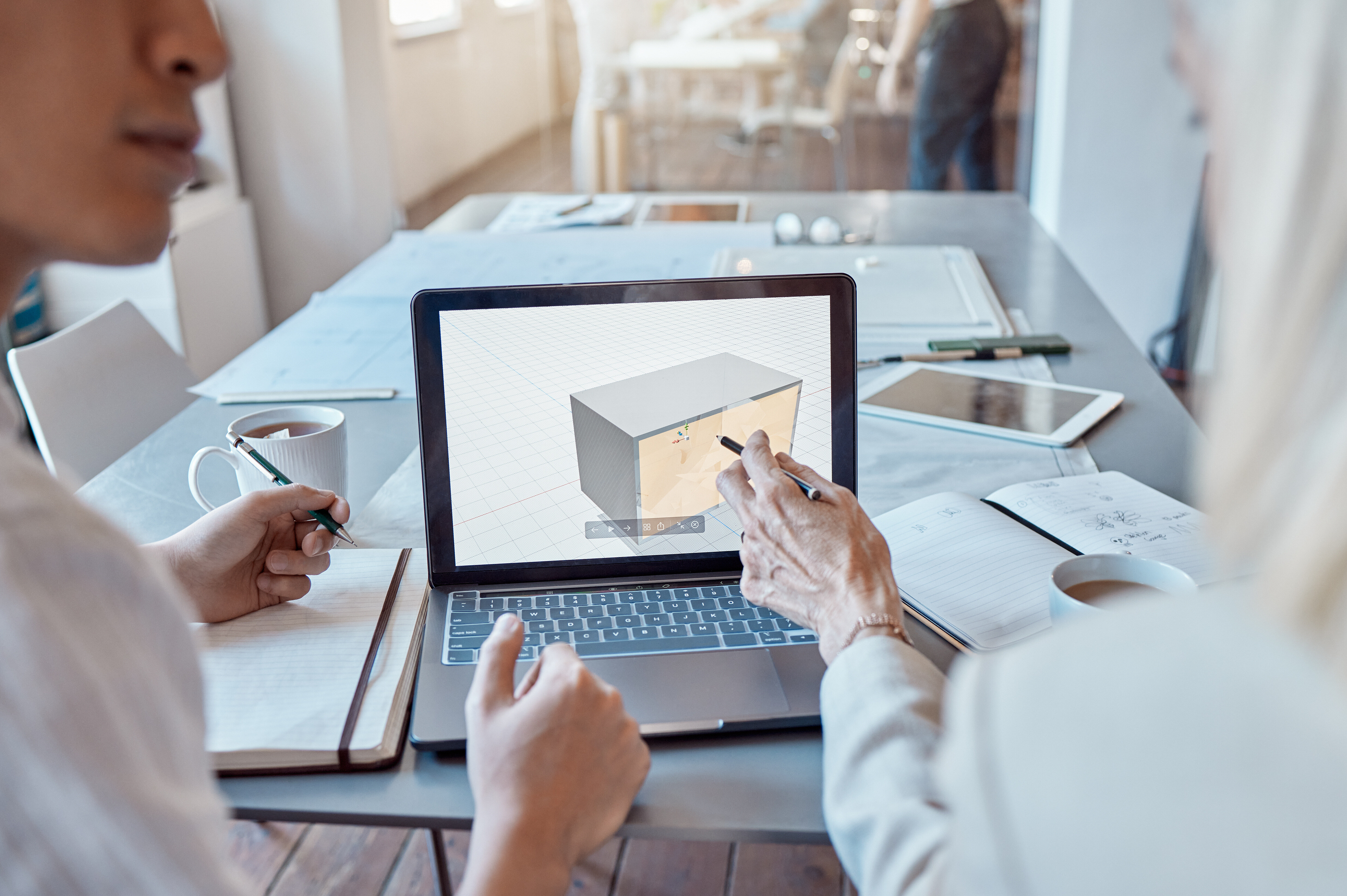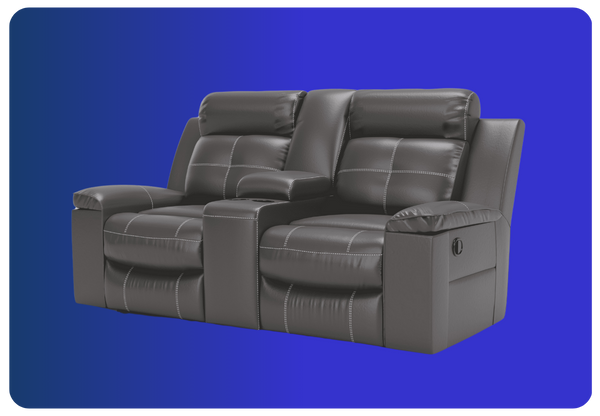Imagine being able to craft, test, and perfect innovative products without a single piece of physical material.
This is what 3D modeling brings to the world of product creation. Here it serves as a powerful bridge between imagination and creation.
It transforms ideas into detailed 3D product models that can be meticulously refined long before they are built, revolutionizing industries from automotive to healthcare.
What Is 3D Modeling In Product Design?
3D modeling is a technology that involves creating a three-dimensional digital representation of a physical object.
This technology is primarily used in product design to visualize, simulate, and test products before they are manufactured.
Using specialized 3D modeling software, designers can create complex and precise models that can be viewed and manipulated from any angle.
These models enhance both the creative and technical aspects of product development.
Consumer-friendly 3D model-making software are enabling not just large industries but also individual designers to make advanced design capabilities more accessible than ever before.
The tools and software like AutoCAD, SolidWorks, and Blender all share the ability to bring ideas to life in ways that traditional 2D sketches can’t.
Photo rendering allows designers to create photo-realistic images of these models, simulating different environmental settings and lighting conditions.
This capability is invaluable for marketing and client presentations, providing a vivid preview of how the product will appear in real life. And helping stakeholders visualize the final product before it enters production.
Additionally, 3D modeling in product design facilitates faster innovation cycles by enabling quick iterations.
Designers can test and modify designs based on feedback and testing results.
This speed and flexibility make 3D product design indispensable in today's market, where time to launch can be critical to success.
Benefits Of 3D Modeling
The field of 3D modeling and rendering demonstrates a paradigm shift in technologies that have repercussions for a multitude of sectors.
Below are the major advantages of implementing 3D models and their rendering into images:
Visual Impact And Realism:
The term "3-dimensional" refers to the depth of the object that appears graphically.
And it means that the audience can dive into the object’s dimensions and appreciate the details.
Through rendering of the model, the light’s position can be accurately controlled to produce realistic shadows and textures.
Improved Design And Planning:
3D models mimic the physical attributes or structures of the real products while still in the prototyping phase.
For example: it’s common in architecture to create 3D models that they use to try out and alter designs.
This allows the architects to see problems in the early stages.
Enhanced Communication And Marketing:
3D renderings empower companies to deliver their ideas in a more engaging and understandable way.
Unlike 3D models, these renderings contain information that is easily understood by customers and investors.
They improve marketing by providing a detailed picture of the product, making them more efficient with their clarity and impact.
Interactive Experiences:
3D models are equipped with interactive features that allow the creation of lively and immersive virtual reality environments for users.
These models are turning out to be interesting and informative tools following the developments in educational, architectural, and commercial industries.
Cost-Effectiveness:
Despite being resource-intensive at the outset, the applications of 3D models are more economical over time.
Thanks to the possibilities for photoreal dimensional analysis, which this method allows, the testing of the equipment and verification of functionality become more cost-effective.
Scalability and Flexibility:
Online 3D models are naturally scalable and flexible so that they can be changed, magnified, or repeated in different applications.
Realism can impact filmmakers, game developers, and virtual interior decorators who use photorealism.
Industries Benefiting from 3D Modeling
The impact of 3D modeling spans a wide array of industries, each harnessing its capabilities to enhance product design, reduce time to market, and address unique industry challenges.
3D modeling services have become essential in streamlining processes in various sectors.
Here’s a closer look at some of the sectors where 3D modeling services and 3D product modeling are making significant changes:
Retail And E-commerce
In the retail sector, particularly e-commerce, 3D modeling is used to create detailed product images and interactive 3D configurators.
Customers can view products from multiple angles and configurations, which helps them make informed purchasing decisions.
This is especially useful for furniture and home decor, where visualizing the product in one’s own space can significantly influence buying behavior.
Manufacturing
In manufacturing, 3D modeling and 3D printing are closely linked, with the latter often used to produce complex parts and tools directly from digital models.
This integration allows for more agile manufacturing processes, enabling companies to make small batches of customized products efficiently and economically.
Manufacturers employ 3D modeling services to convert raw design concepts into highly accurate digital models.
This facilitates easier collaboration across global teams and reduces errors in the final products.
Fashion And Jewelry
The fashion and jewelry industries are also embracing 3D model-making software to create intricate designs that would be difficult or impossible to visualize.
Designers can experiment with different materials, styles, and fits, allowing for a high degree of customization and precision.
This capability is particularly beneficial for high-end custom designs, where the margin for error is minimal and the expectation for uniqueness is high.
Automotive Industry
3D modeling immensely benefits the automotive sector where they utilize it to design everything from small components to entire vehicle chassis.
3D modeling revolutionizes the automotive industry by enabling engineers to design and test vehicle components virtually.
Consumer Electronics
The consumer electronics industry relies on 3D modeling software to design the sleek, compact, highly functional devices consumers demand.
From smartphones to wearable technology, 3D modeling software facilitates a rapid development cycle that helps companies stay competitive in a market where innovation is key.
Gaming
The gaming industry uses 3D modeling to create detailed and immersive game environments and characters.
This technology allows game designers to build complex worlds with realistic textures and interactions, enhancing the overall gaming experience for players.
Healthcare
In healthcare, 3D product modeling is revolutionizing the creation of custom prosthetics and implants, offering tailor-made solutions that significantly enhance patient care.
Surgeons use 3D models for pre-surgical planning, giving them a clear view of the area to operate, improving surgical outcomes.
Moreover, 3D printing, a direct offshoot of 3D modeling, allows for these customized solutions to be produced quickly and cost-effectively.
Architecture And Construction
Architects and construction professionals use 3D modeling to visualize buildings and other structures before the actual construction begins.
In a quantitative study, it was found that the greatest increase in productivity could be achieved with 3D modeling.
Furthermore, 3D modeling allows for better communication between architects, builders, and clients, ensuring that all parties have a clear understanding of the proposed design and its functionality.
To discover how 3D products are transforming eCommerce, please see - Revolutionizing eCommerce: The Power of 3D Product Visualization.
3D modeling has significantly transformed product design across various industries, enhancing the way designers visualize, test, and modify products with remarkable precision and speed.
This technology streamlines development processes, boosts innovation, and helps meet the evolving needs of businesses and consumers, from automotive to healthcare.
Despite challenges like high costs, complexity, and security concerns, the benefits of 3D modeling make it essential for modern design and manufacturing.
As it continues to integrate with technologies like AI, 3D modeling is set to expand its impact further, shaping the future of how products are designed and interacted with.
For industry leaders, keeping pace with these advancements is crucial for leveraging the full potential of 3D modeling.
About Toggle3D: A Game-Changer for Real-Time 3D Rendering
Toggle3D is the ultimate AI-powered 3D design studio. Whether you’re looking for 3D design software to convert and texture CAD files, prototype design, or generate AR designs, Toggle3D is a web-based intuitive tool anyone can use to turn CAD into web 3D and AR designs without prior design experience or skill!
Key Features and Benefits of Toggle3D
- Make Prototypes Come to Life: Change colors, textures, and finishes in real-time as you design and engage with the model 360 degrees before even manufacturing.
- Enhanced Collaboration: Seamlessly communicate design changes in a remote environment by sharing this with anyone on the web.
- Save Time and Cost: Repurpose the same 3D model for design iterations, product promotions, or presentations before ever building it, saving time and money.
How Does It Work: 3 Simple Steps
1. Import CAD or 3D file
2. Add materials from our pre-built library or make your own
3. Share!
To learn more about Toggle3D - the ultimate design studio click here.








